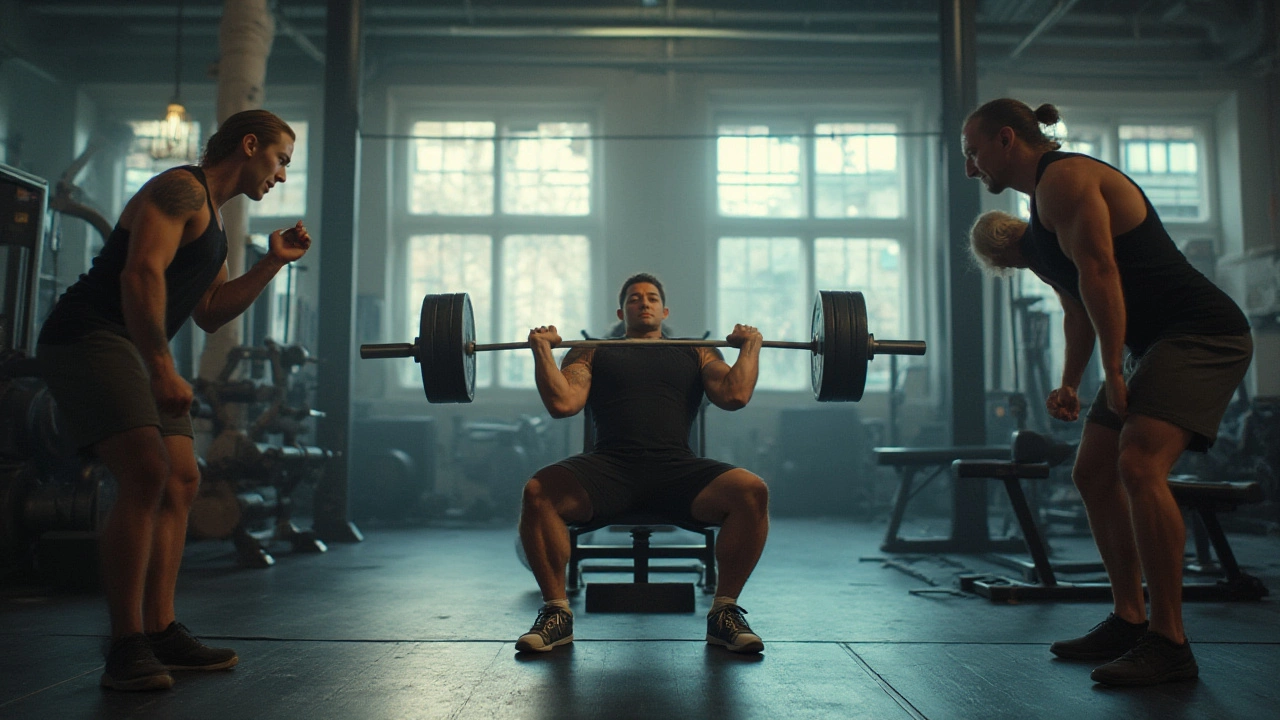
Bench Press Basics: How to Lift Safely and Get Bigger Results
If you want a solid chest workout, the bench press is the go‑to move for most lifters. It hits the chest, shoulders and triceps in one solid press, but only if you do it right. Below you’ll find the most useful tips to nail the form, avoid injuries, and keep your progress moving forward.
How to Nail the Perfect Form
Start by lying flat on a bench with your eyes directly under the bar. Plant your feet firm on the floor – they act as a sturdy base and help you generate power. Grab the bar with a grip slightly wider than shoulder‑width; a too‑wide grip stresses the shoulders, while a too‑narrow grip turns the lift into more of a triceps exercise.
When you lift the bar, keep your elbows at about a 45‑degree angle to your body. This angle protects the shoulder joint and lets the chest do most of the work. Lower the bar until it lightly touches the middle of your chest – don’t bounce it, and don’t let it drift too high on your sternum. Press the bar straight up, focusing on pushing through your heels and squeezing your shoulder blades together.
Breathing matters too. Inhale as the bar comes down, then exhale powerfully as you push it up. A controlled tempo (about two seconds down, one second up) gives you more time under tension and reduces the chance of a sudden wobble.
Bench Press Variations to Keep Things Fresh
Sticking to the flat bench forever can stall progress. Swap in a few variations every few weeks to hit the muscles from new angles and avoid plateaus.
- Incline bench press: Set the bench at 30‑45 degrees. This pushes the upper chest and front delts harder, giving a fuller look.
- Decline bench press: A slight decline focuses the lower chest and reduces shoulder strain, useful if you have shoulder trouble.
- Close‑grip bench: Move your hands in so they’re just inside the elbows. The triceps do most of the work, perfect for building lockout strength.
- Dumbbell press: Using dumbbells forces each side to work independently, fixing any left‑right strength imbalances.
- Paused bench: Pause for one to two seconds on the chest before pressing. This removes momentum and forces pure strength out of the chest.
Pick one or two variations each training cycle and keep the rest of your program steady. Your body will adapt faster when the stimulus changes, and you’ll keep seeing gains.
Finally, remember that recovery is part of the bench press plan. Give your chest at least 48 hours before hitting heavy again, and make sure you’re getting enough protein and sleep. A solid warm‑up – a few light sets and some shoulder mobility drills – will also cut down on shoulder aches.
With these simple steps, the bench press can become a safe, effective tool for building a stronger upper body. Try the tips, experiment with the variations, and watch the plates add up without the pain.
